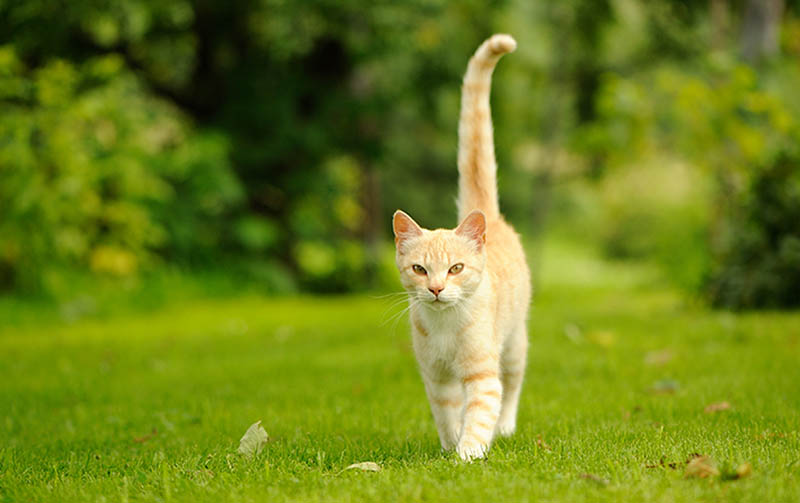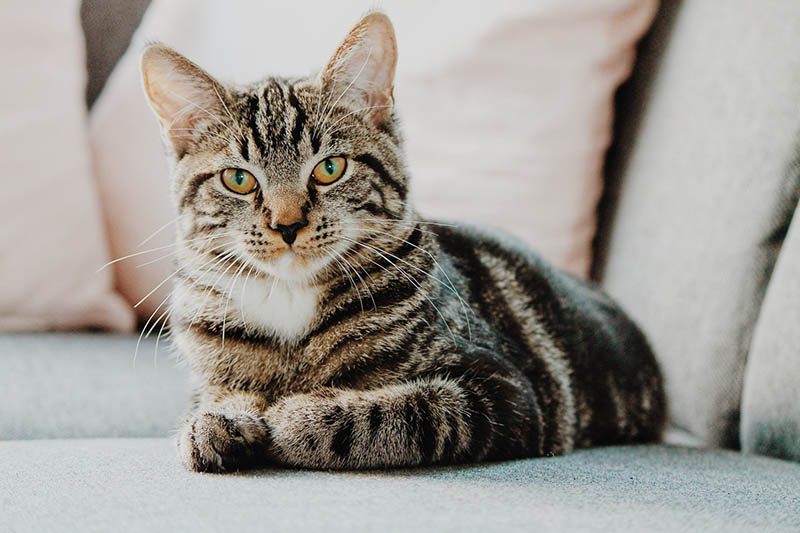Norwegian Forest Cat Grooming (Step-by-Step Guide)

Updated on
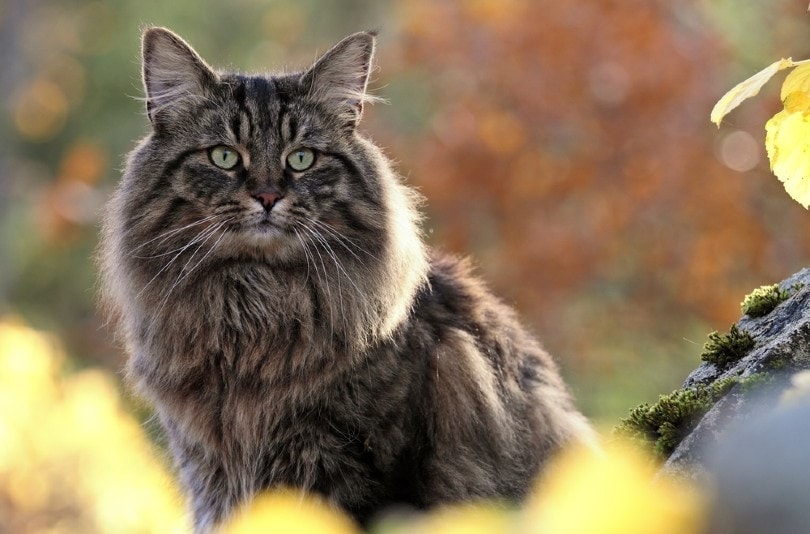
Click to Skip Ahead
Built to withstand the cold, harsh winters of Norway, their country of origin, the Norwegian Forest Cat is one of the fluffiest cats around. Their thick double coats are heavily insulated during winter, shed excessively in the spring, and are much lighter — but no less impressive — in summer.
Despite many long-haired cats requiring lengthy, daily grooming sessions, the Norwegian Forest Cat, or “Wegie,” is surprisingly low maintenance. This doesn’t mean they don’t benefit from regular spa treatments, though. This step-by-step guide will tell you the best way to tend to your Wegie’s grooming requirements.
Things to Remember
Start Young
When you get a new kitten, the earlier you start a grooming routine, the more likely your cat will enjoy it. By introducing them to the tools that you use to groom them when they’re young, they’ll be happier to sit still when they’re older. Grooming routines can also help you develop strong bonds between yourself and your new kitten.
You can groom older cats if you’ve rescued one from a shelter. Keep in mind that older animals might be nervous around unfamiliar people and timid around grooming tools, especially if they were abused or neglected.
If your cat shows signs of distress when you’re grooming them, keep the sessions short, and don’t hold them against their will. Take your time, and reassure your cat with treats and praise. You want them to associate grooming sessions with enjoyment and relaxation, not fear and stress.
Don’t worry if it takes your senior cat longer to adjust to the grooming routine than it would with a kitten.
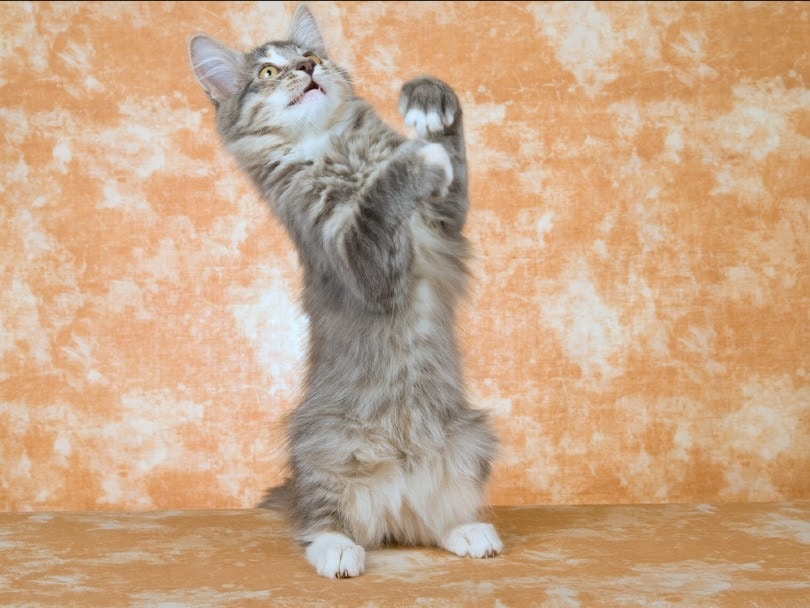
The Time of Year
Winters in Norway are notoriously cold, snowy, and often damp. As a result, Norwegian Forest Cats developed a thick coat to keep them warm and dry throughout the colder seasons. However, the extra insulation isn’t needed during the warmer months. Therefore, it’s important to consider the time of year when it comes to developing your cat’s grooming routine.
Norwegian Forest Cats don’t require much grooming most of the year, but they do shed excessively in spring. As the weather starts warming up, you should increase the frequency of your grooming sessions to prevent loose fur from building up in their coat. By capturing their shed fur with a brush, you can also help clean up the loose hair before it sticks to your carpet and furniture.
The 5 Steps for Grooming Your Norwegian Forest Cat
1. Determine a Schedule
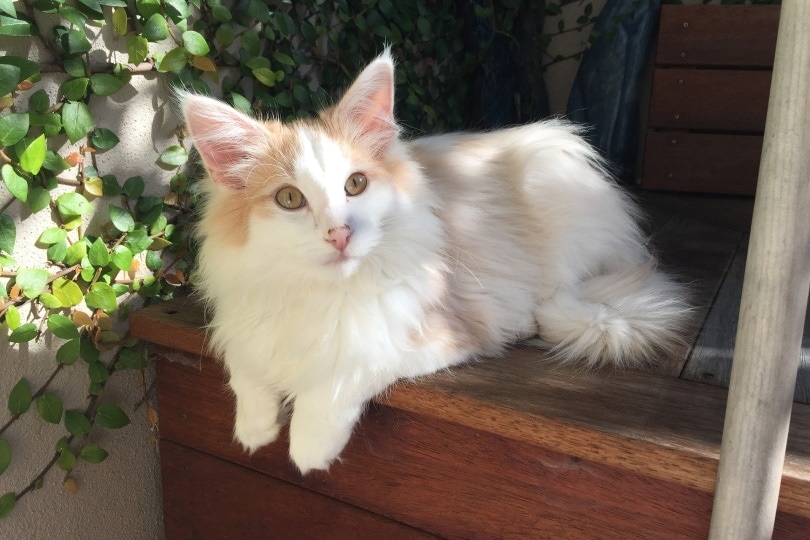
Many long-haired cat breeds need daily grooming sessions to keep their coats in good shape. The Maine Coon, in particular, is a breed that requires a great deal of maintenance when it comes to their fur. In comparison, the Norwegian Forest Cat is more like a short-haired breed when it comes to their grooming requirements.
Combing their fur once or twice a week is often more than enough to prevent matted and tangled fur. These cats do shed their winter coats during the spring as the weather starts to warm up. While you can do fewer grooming sessions throughout the rest of the year, remember to groom them more often during the springtime.
2. Use the Right Brush
Norwegian Forest Cats might have similar grooming requirements as short-haired breeds, but their fur is still longer. The soft bristle brush that you use to spread oils through your short-haired cat’s fur won’t penetrate deep enough into your Wegie’s dense undercoat to remove loose hair.
A steel comb or dematter are the best choices for double-coated breeds. Don’t push too hard, though; just gently glide the tines through your cat’s fur. The comb will reach into their fur and pull any shed hair up to the surface so you can remove it.
3. Detangle Matted Fur
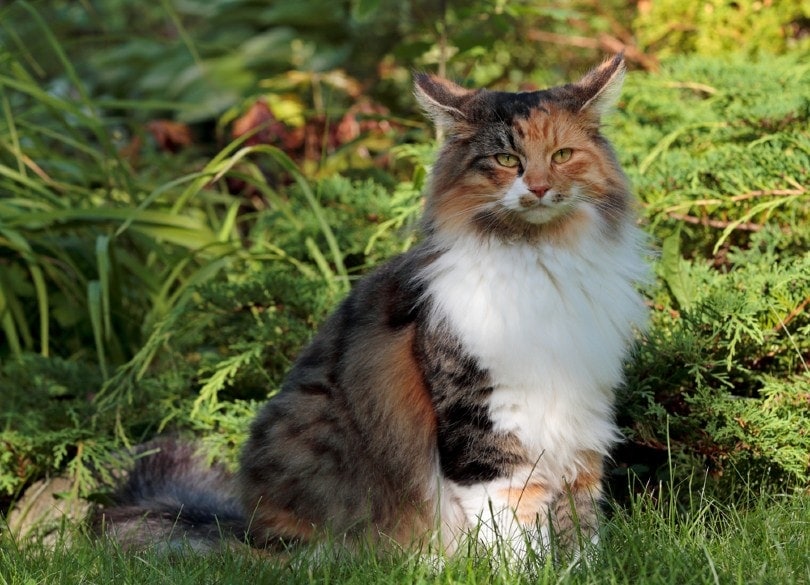
Sometimes, your cat’s adventures can lead them into all sorts of trouble and mess up their carefully tended fur. For long-haired cats especially, shed hair and too many twigs can build up and cause stubborn tangles.
During your grooming sessions, make sure to tease out matted knots with your fingers. You can also loosen particularly stubborn tangles with a damp cloth. If you can’t work them free, use cat clippers to carefully cut off the knots. Try to avoid using scissors, as you can accidentally injure your cat if they startle while you work.
4. Check Their Claws and Ears
While you’ve got your cat relaxed during a grooming session, it’s a great time to check on a few other places that need maintenance too.
Your cat will often tend to their claws themselves by scratching their favorite scratching post or digging their claws into the wooden fence outside. Check their claws regularly, anyway, to make sure they’re clean and well maintained. Unlike dogs, you don’t have to clip your cat’s claws as often, but if they’re looking particularly bedraggled, you can use pet nail clippers.
Remember to avoid the quick, a blood vessel that runs inside each of your cat’s claws. Introduce your cat to nail clippers when they’re young so they don’t become fearful of the routine.
Regularly checking your cat’s ears is important too. Norwegian Forest Cats have a large amount of hair around their ears to protect them, but making sure their ears are clean is still a good idea.
5. Clean Their Teeth
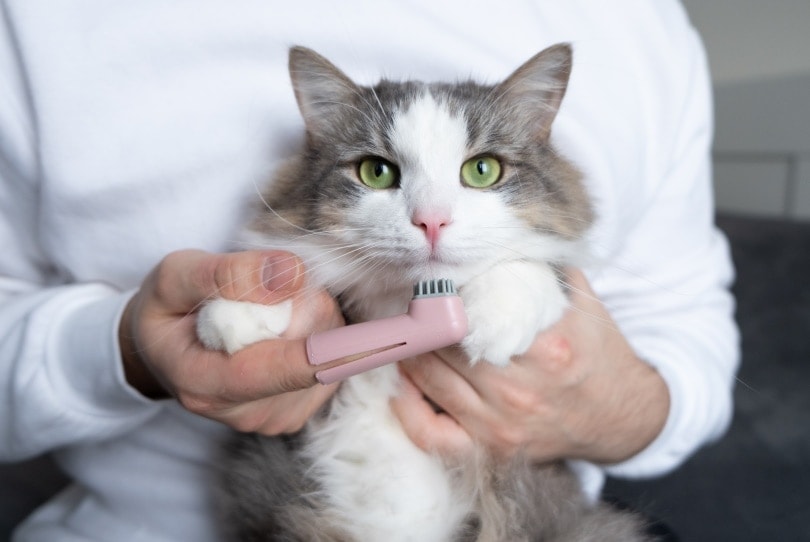
Regular brushing with feline-appropriate toothpaste is a good way to prevent dental issues from developing. This grooming essential works best if you start when your cat is younger.
Certain cat treats and kibble can help keep your cat’s teeth clean too. While it’s not a good idea to rely on these treats alone, they can be useful in a pinch and allow you to brush your cat’s teeth less often.
The 5 Reasons to Groom Your Norwegian Forest Cat
Generally, cats are more than capable of tending to their hygiene needs. Human intervention, no matter how well-meaning, can even cause extra problems. Dry skin is often caused by over-grooming, whether it’s by our cats or our attempts to help keep them clean.
When done right, though, regular grooming sessions can be an effective way to keep our cats healthy. Here are a few reasons that you should consider grooming your Norwegian Forest Cat.
1. Aging
There comes a point when your senior cat might not be physically capable of keeping themselves clean properly. Older cats often develop joint problems like arthritis that can make it difficult for them to maneuver enough to give their fur the attention that it requires.
If your aging cat is looking unkempt despite trying to keep up with their grooming habits, give them a helping hand by grabbing a comb.
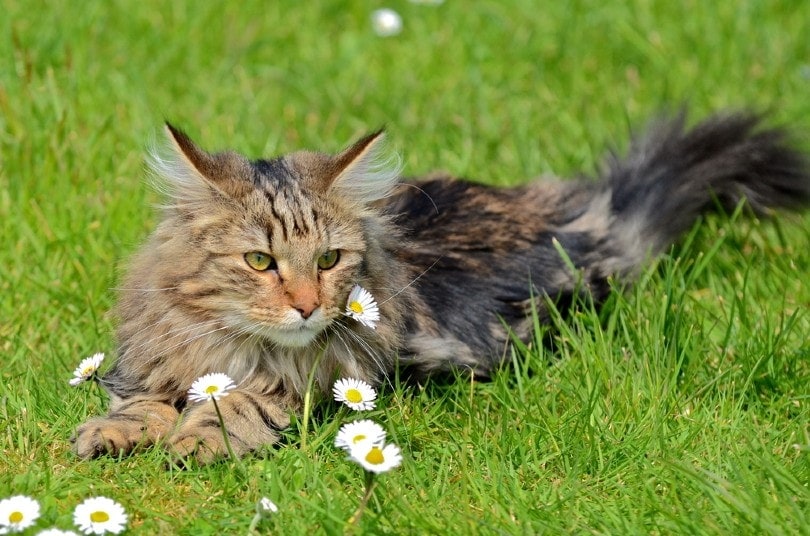
2. Allergies
Norwegian Forest Cats aren’t considered hypoallergenic by any means, but regularly ridding their fur of loose hair can help reduce the number of allergens in your home. Not only will it control the amount of dander and saliva-covered fur on your carpet, but you’ll also collect any dust or pollen that their coats picked up during their adventures.
You might not prevent them from setting off your hay fever or cat allergy altogether, but it might be able to help.
3. Bonding
Cats groom each other to form bonds and strengthen their relationships. They don’t just limit this behavior to other cats, and they might even groom you if they think that you need it or just to show their affection.
By grooming them in return, you’ll be nurturing the bond between you. Spending time pampering your cat is also one of the best ways to unwind after a long week. There’s something about that happy purr that makes your worries seem so far away.
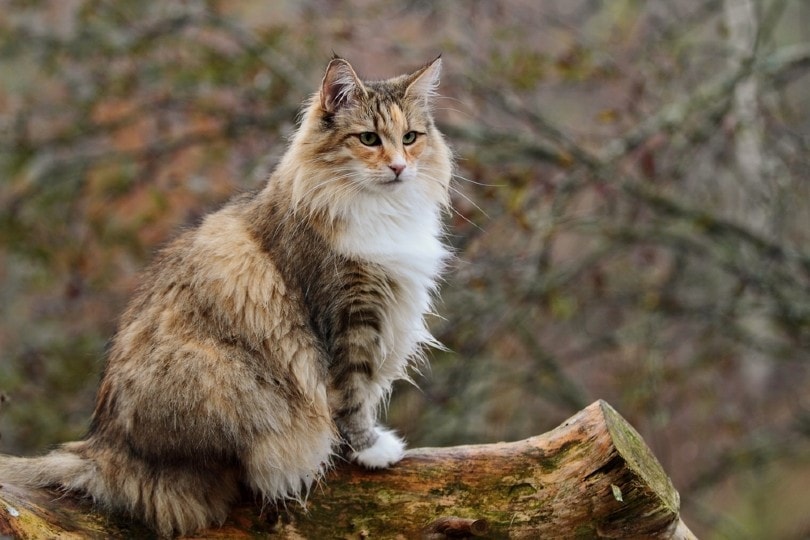
4. Hairballs
Norwegian Forest Cats shed, and when they groom themselves, the loose fur has to go somewhere. Most of the time, all those loose strands of hair get ingested by the cat and slowly build up in their digestive system. You can help reduce those pesky hairballs by helping your cat with their grooming.
If you use a comb to remove the loose fur before your cat can ingest it, there will be less for them to swallow only to hack up again later.
5. Obesity
Aging isn’t the only thing that can affect your cat’s ability to groom themselves. Norwegian Forest Cats are a relatively healthy breed and are happy exploring outdoors or spending time inside, but they can suffer from obesity.
If you give your Wegie too many treats and don’t encourage them to get enough exercise, they can quickly become overweight.
Along with increasing their risk of developing other health conditions, obesity also affects your cat’s flexibility. If they can’t move enough to groom themselves properly, their fur will start looking neglected.
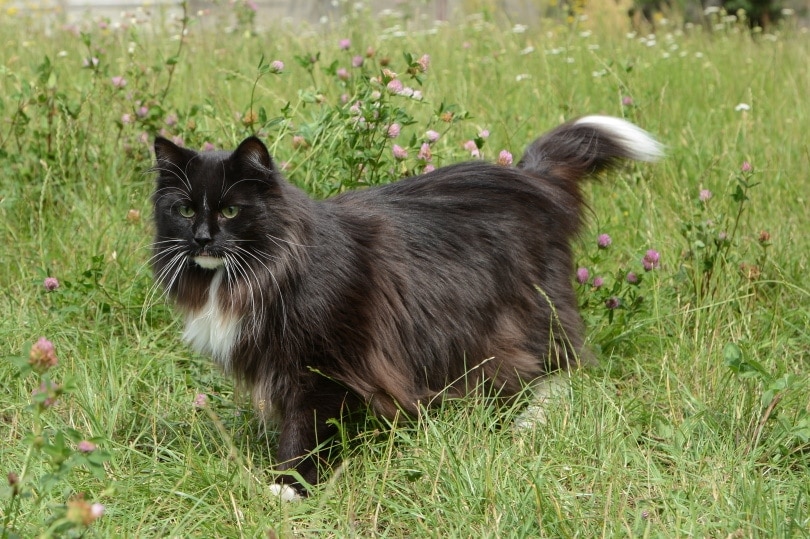
Conclusion
Unlike many other long-haired cat breeds, the Norwegian Forest Cat is relatively low maintenance. They don’t shed much throughout the year except for during spring, when they shed their thick winter coats for their lighter summer fur.
Use a steel comb once or twice a week — more often when they’re molting — to keep their fur sleek, shiny, and free from stubborn tangles. Regular grooming sessions also allow you to make sure your cat’s skin is healthy and their ears, teeth, and claws are clean.
Related Read:
- Tortoiseshell Norwegian Forest Cat: Facts, Origin & History (With Pictures)
- 7 Norwegian Forest Cat Health Problems: Vet-Approved Prevention & Treatment
Featured Image Credit: Elisa Putti, Shutterstock


